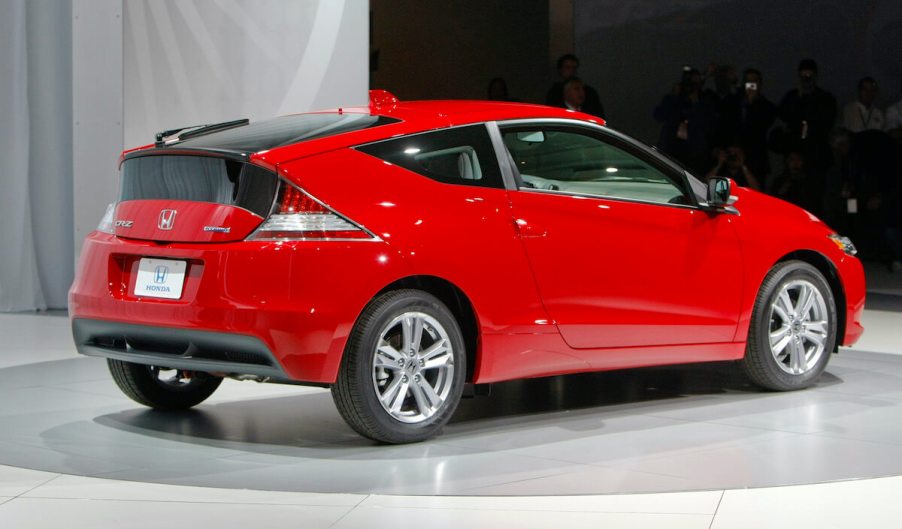
5 Weird Old Hybrid Cars That You Should Steer Clear Of
There’s no doubt that hybrid cars are going to be the way of the future. In fact, they’re quite prevalent now and very good. However, hybrid cars weren’t always great. Some of the models from the early 2000s and 2010s had shaky beginnings because many automakers were still figuring out certain technologies, which have evolved over time. That said, here are five old hybrid cars that you may want to steer clear of.
1. Volkswagen Jetta Hybrid

You probably don’t remember this one, but Volkswagen produced a Jetta Hybrid from 2013 to 2016. In some ways, it was a way for the German automaker to save face amid the “dieselgate” scandal. But, for the most part, it was really meant to serve as a gas-saving alternative for drivers that didn’t want to go diesel at the time.
All things considered, the Volkswagen Jetta Hybrid got the job done. Under its hood was a turbocharged 1.4-liter engine mated to an electric motor and a seven-speed DSG transmission. According to the EPA, the powertrain achieved up to 41 mpg in the city and 48 mpg on the highway, which is fairly good.
However, you might want to steer clear of this car as its many owners complained about engine and transmission issues.
2. Honda CR-Z

Ironically, we actually have a soft spot for the Honda CR-Z because it’s weird, but that doesn’t mean we can recommend it. For the unaware, the CR-Z was the spiritual successor to the fabled Honda CR-X of the 90s. It was a funky-looking two-door, two-seat hybrid car that was meant to be sporty and fuel-efficient. Unfortunately, it was neither of those. With only around 130 hp running through the front wheels, mediocre handling characteristics, and the ability to only get up to 37 mpg, the CR-Z wasn’t a hit.
Honda discontinued it in 2016 after dismal sales. Unless you want a hybrid car that isn’t practical and doesn’t get hybrid-like gas mileage, you may want to stay away from the CR-Z.
3. First-Generation Honda Insight

The third and last generation of the Honda Insight was definitely the best version. However, the Insight wasn’t always good. Looking back at the first-generation model, made from 1999 to 2006, it’s clear that Honda hadn’t cleared out all the bugs yet. Don’t get us wrong; the first-gen Insight was able to get up to 60 mpg, which is astounding. But its lightweight, two-seat chassis made for an impractical car that felt like it could blow away with a heavy wind gust. Also, it was severely underpowered with its 67-hp, 1.0-liter engine.
4. First-generation Toyota Prius

Although the Toyota Prius has become one of the most popular and successful cars on the planet, it wasn’t always good. The first generation of the Prius, produced from 2001 to 2003, featured a snubbed-nose sedan style combined with a hybrid powertrain that produced 114 hp and achieved an average of 50 mpg. That’s much like the current-gen Prius regarding efficiency, but the first-gen model was as comfortable or practical.
Instead of a hatchback, it had a normal trunk. Also, its interior was filled with cheap plastics and a weird design that totally looked like it was from the turn of the century. Stay away from this one unless you like being nostalgic.
5. Lexus HS 250h

Unless you want a small hybrid car that doesn’t live up to the Lexus name, steer clear of the HS 250h. Consumer Reports once noted that it lacked refinement, had a narrow cabin, and a center console that was too big for comfort. It also had a bouncy ride, and there was too much wind noise in the cabin. Under its hood was a 187-hp hybrid engine that was decent when it came to power, but its real-world 31-mpg average was not so decent.
Five weird hybrid cars to stay away from
Although the hybrid cars that we know and love today are good and are getting even better, they all started somewhere. And while it’s easy to poke fun at the shortcomings of the hybrids from yesteryear, we should be thankful for them. However, you might want to only admire them from afar.





